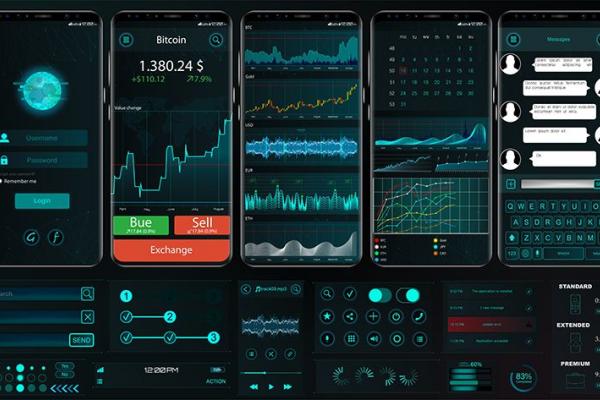

Different Trading Styles
In this article, we'll discuss the trading styles you're likely to encounter. What typically separates styles is the amount of time spent on a single trade, the time of entry and, in some cases, the frequency. There are no strict rules regarding the timeframes that a particular trader should use. However, the table below provides average timeframes.
Choosing the trading style that best suits your personality can be a difficult task for new traders. If you're new to the subject (or even if you're an experienced trader) and still don't feel that you have found your style, the following are some of the personality traits compatible with the different trading styles. By choosing one that suits your personality, you'll have greater chances of becoming a profitable trader. But remember that trading is risky and profits are not guaranteed.
|
Trading Style |
Timeframe |
Holding Time |
|
Intraday trading |
Short-term |
One day |
|
Swing trading |
Short-term |
Few days or weeks |
|
Scalping |
Very short-term |
Few seconds or minutes |
|
Position trading |
Long-term |
Months or years |
|
Trend trading |
Long-term |
Months or years |
Intraday Trading
Most commonly practised among retailers in the Indian stock market, with intraday trading, positions are squared before the market closing hours. The philosophy of intraday trading is that exposure during the night is risky. Traders record gains or losses quickly and make multiple trades every day. It's convenient for people who care less about fundamentals or things that are considered important to be a successful long-term investor. For them, it's about managing their money, measuring the time for inputs and outputs and appropriately sizing their positions.
Whether you trade professionally or not, intraday trading involves taking additional leverage to generate potential returns. A word of caution: High leverage also implies higher risk.
It's also among the most aggressive trading styles. Day trading thrives thanks to high volatility as the number of opportunities increases. A successful day trader understands the importance of the coherence and power of compound returns in the short term. If consistency is maintained, the returns can potentially be compounded monthly or quarterly. Day trading is only suitable for those who can devote a sufficient amount of time to tracking the movements of the stock exchanges regularly. Be careful, due to the large number of transactions in one session, there is a high risk of capital loss
Swing Trading
The main difference between intraday and swing trading is the timeframe. Swing traders try to predict the short-term fluctuation of stock prices overnight. Positions can last from one day to a few weeks. The leverage used by swing traders is generally lower than in intraday trading. Due to the risk of the night, brokers in India charge SPAN+ exposure margins. In a way, it allows traders to better resist price movements at night and hold positions for longer, therefore, trying to get higher profits per trade. Most technical traders and chartists fall into this category. If you like to analyse the movements of short-term prices using technical analysis, this is your style of play.
Pure swing trading also involves a lot of money flow analysis. It's rewarding, and the price movements are more predictable. However, risk management should be more sophisticated. In this style, you should be able to ignore minor intraday fluctuations without worrying. However, most swing traders also perform intraday trades, so it's a style that can be merged. In any case, it's important to draw a line and focus on a particular trading style.
Swing trading exposes you to greater risks. Swing traders are involved in many markets at the same time. This can be a disadvantage and put too much capital at risk in the markets if the swing trading strategy fails to deliver.
Scalping
Scalping is a very fast trading style. Scalpers often operate at intervals of a few seconds and in opposite directions (i.e., they make long choices one minute but short the next). Scalping is more suitable for active traders who can make immediate decisions and act without hesitation. Impatient people are often the best scalpers because they expect their exchanges to become profitable immediately and decide to exit the business quickly if the results go against them.
To achieve a correct performance, it is necessary to spend a lot of time scalping. Very many transactions are performed every day by scalping. In each position, the scalper must keep a keen eye on his market developments, and cannot devote himself to other activities.
Scalping, therefore, requires a high capacity for concentration. By using a large leverage effect, the mind is in the right place to take a winning position. Note, large leverage is a risk of losing your capital
Position Trading
Position trading is the longest-term trading of all and often involves operations that last several years. Therefore, position trading tends to be suitable for more patient traders.
This is a type of trading style that ignores the small short-term fluctuations that swing traders fully focus on. Position trading implies less leverage than swing trading. The waiting time for each operation is higher since these traders anticipate a large structural movement in the future.
Synchronising the market isn't the top priority for this category of traders, as they are willing to survive the storm and wait a few months to see a large gain. Its approach is generally a hybrid of technical and fundamental aspects. To hold positions for a longer period, they feel they have to be sure of what is happening inside the asset they are betting on. They're looking for underlying stocks to earn more than 20% in the near future. Position traders can lean more towards investment in the long term.
Trend Trading
The objective here is to identify a trend and only trade in the same direction. Traditionally, trend traders have partnered with long-term fund managers. You can become a trend trader at any time as a trend of all timeframes.
Choose a Trading Style

Choosing a trading style requires flexibility to know when it's right for you, but it also requires consistency to continue with the correct one, even when it's not working optimally. One of the biggest mistakes new traders often make is changing trading styles at the first sign of problems. Constantly switching styles is a sure way to catch all the losing streaks. Once you're comfortable with a particular style, be faithful, and it could reward you for your long-term loyalty.
If you haven't chosen a suitable trading style yet or have already decided on it and want to see if it suits you, try to master your skills with a Libertex demo account. Open a demo account and practice your appropriate trading style without risk.
Disclaimer: The information in this article is not intended to be and does not constitute investment advice or any other form of advice or recommendation of any sort offered or endorsed by Libertex. Past performance does not guarantee future results.
Why trade with Libertex?
- Get access to a free demo account free of charge.
- Enjoy technical support from an operator 5 days a week, from 9 a.m. to 9 p.m. (Central European Standard Time).
- Use a multiplier of up to 1:30 (for retail clients).
- Operate on a platform for any device: Libertex and MetaTrader.